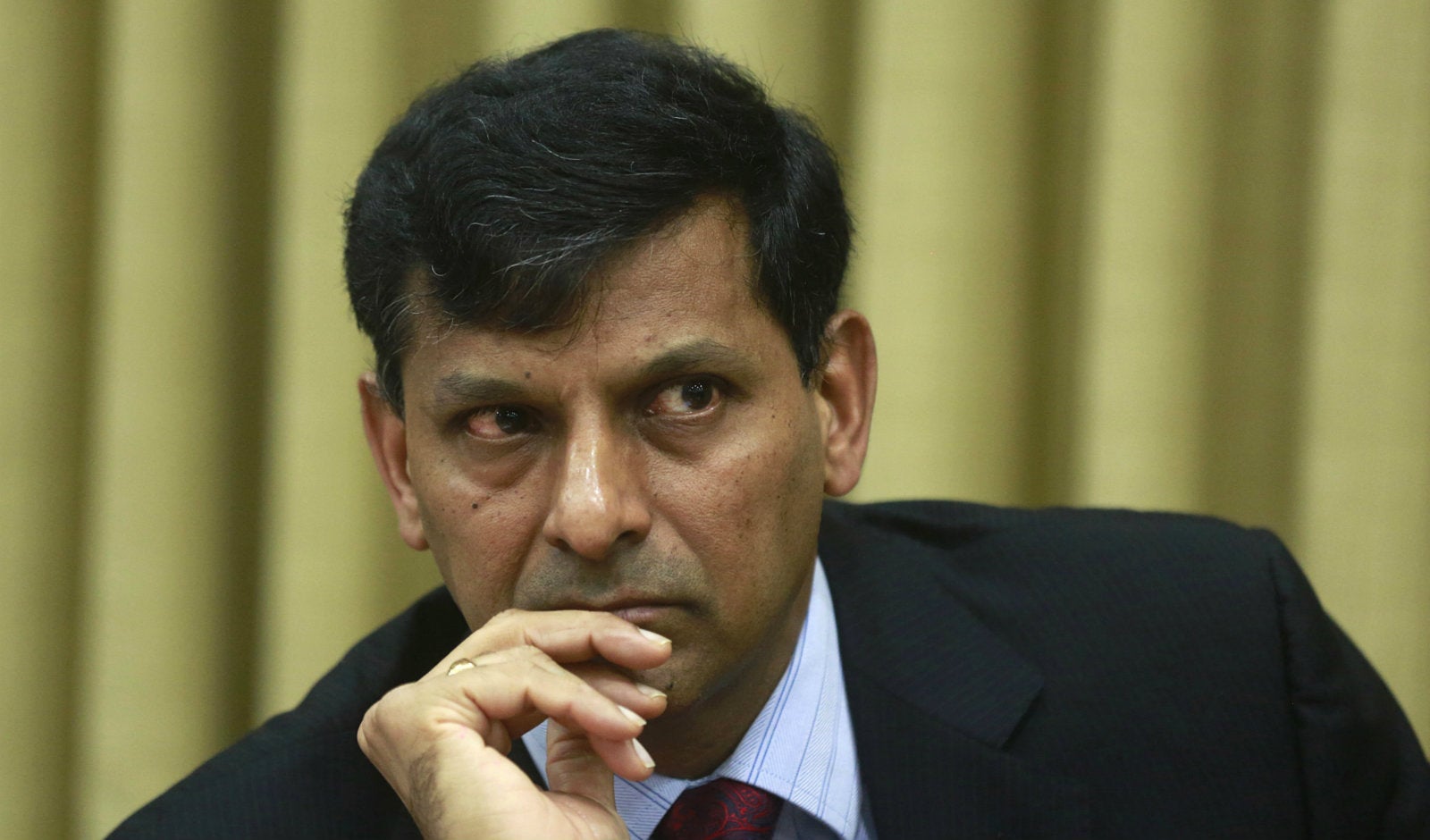With Arun Jaitley padding up for the budget, Raghuram Rajan sidesteps interest rate googly
In the first bi-monthly monetary policy review of the 2016 calendar year—and the last before this year’s budget is presented in end-February—Reserve Bank of India (RBI) governor Raghuram Rajan decided to keep key interest rates unchanged.


In the first bi-monthly monetary policy review of the 2016 calendar year—and the last before this year’s budget is presented in end-February—Reserve Bank of India (RBI) governor Raghuram Rajan decided to keep key interest rates unchanged.
“The Indian economy is currently being viewed as a beacon of stability because of the steady disinflation, a modest current account deficit and commitment to fiscal rectitude. This needs to be maintained so that the foundations of stable and sustainable growth are strengthened,” the RBI said in a statement announcing the policy review (pdf).
The RBI has been closely tracking retail inflation in the country to decide on the interest rate trajectory. In December, the consumer price inflation inched upwards to 5.6%, while the RBI’s target is to bring down inflation to 5% by March 2017. Last year, Rajan cut interest rates four times by a total of 125 basis points.
“The Reserve Bank continues to be accommodative even as it leaves the policy rate unchanged in this review, while awaiting further data on the development of inflation,” the statement added.
However, the governor cautioned that the implementation of the Seventh Pay Commission has not been factored into the inflation projection, and that might push inflation higher for one or two years. In a press conference in Mumbai, Rajan said that he “will not comment on the future policy actions,” adding that data will shape any future move.
Looking at the budget
The repo rate—the rate at which the RBI lends to commercial banks—is now at 6.75%. A drop in the repo rate means cost of capital for banks decreases. Banks can then transfer this benefit to consumers, in turn lowering debt burdens and boost spending.
But the RBI has indicated further rate cuts or hikes will depend on the government’s Union Budget. Finance minister Arun Jaitley will present the budget on Feb. 29.
“Structural reforms in the forthcoming Union Budget that boost growth while controlling spending will create more space for monetary policy to support growth, while also ensuring that inflation remains on the projected path of 5% by the end of 2016-17,” the statement said.
“The budget has to be viewed as a package always. Everybody including the markets are not looking at any one number, they are looking at the package,” Rajan told reporters. In a speech last week Rajan, warned that moving away from fiscal consolidation can hurt macroeconomic stability. He also said that inflation management was still an important task for the country.
“If every time there is any minor difficulty, we change the goal posts, we signal to the markets that we have no staying power,” he said. ”Let me therefore reiterate that we have absolutely no intent of departing from the inflation framework that has been agreed with the government.”